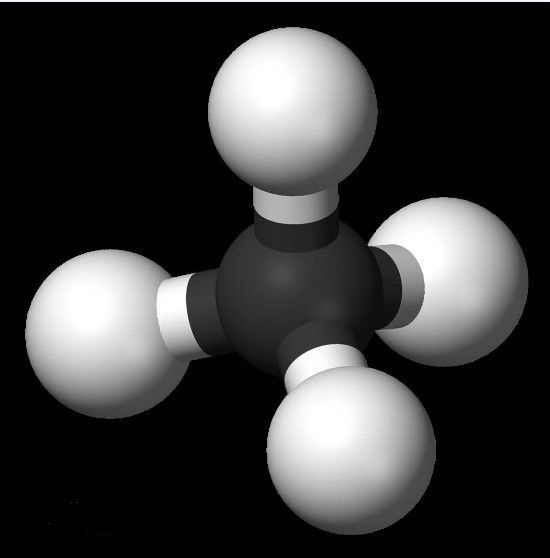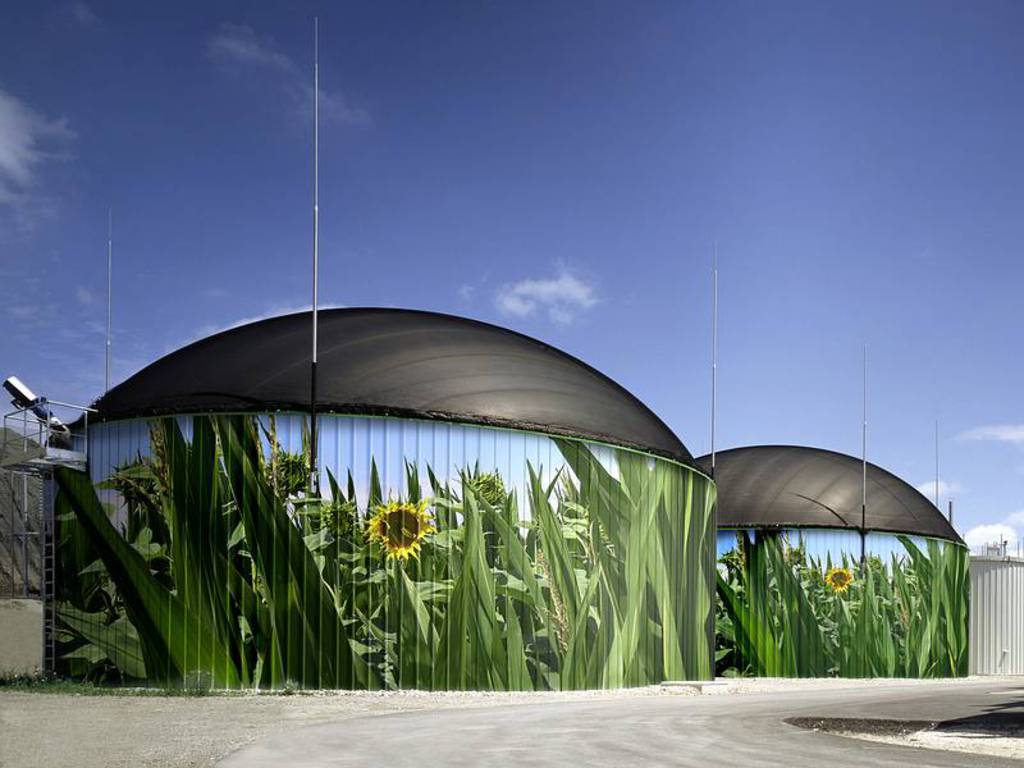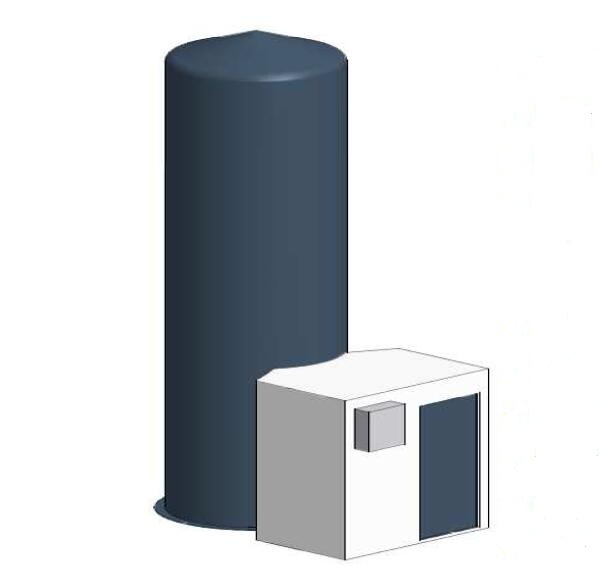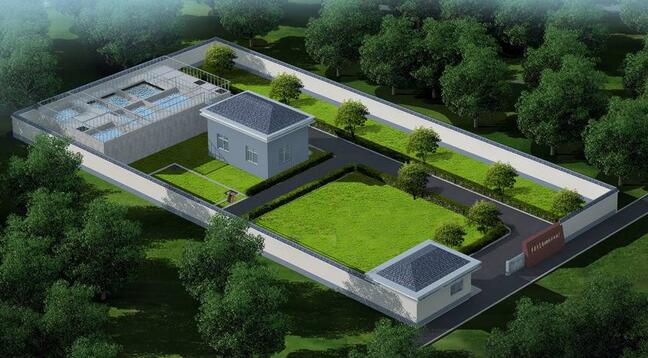Biogas Plant
BIOGAS GENERATION
Biogas is a kind of gaseous fuel, produced when organic substances are broken down anaerobically in the absence of oxygen, under proper temperature and pH value;Biogas is a renewable energy source that is sustainable.
Livestock & poultry manure, organic waste water, food waste, household garbage, straw and other biomass can be the source of organic materials, by using anaerobic fermentation process, through four stages of hydrolysis, acidification, acetic acid formation and methane production, to produce biogas.

BIOGAS COMPOSITION
The main component of biogas is methane. Biogas consists of 50% ~ 70% methane (CH4), 20% -40% carbon dioxide (CO2), 0% -5% nitrogen (N2), less than 1% hydrogen (H2), less than 0.4% oxygen (O2) 0.1% -3% hydrogen sulfide (H2S) and other gas composition.
Calculated by 60% methane volumetric content in biogas, the thermal value of each cubic meter of biogas is about 21,000 kJ (5,000 kcal).
BIOGAS UTILIZATION
If biogas is correctly treated and used, it can instead become a valuable resource of new energy. It provides a renewable and environmentally friendly source of energy for heating and power generation.
Biogas is a combustible gas, can feed the internal combustion engine to produce electricity; Its another application is generating heat through hot water or steam boilers. Its composition is similar to natural gas, after purification and upgrading, it can be used for producing CNG, to be delivered to gas station to feed vehicle or go into pipeline network to give logistical advantage;
Biogas Plant
The purpose of building biogas plant is to obtain green energy and reduce pollution for environment.

Biogas production can be achieved from different scales of biogas plants. Biogas, as a kind of sustainable and renewable energy, can be used for electric power generation for local needs or being synchronized to national grid, or as fuel of boiler for producing hot water or steam; It can also be the source of producing compressed natural gas, to feed vehicle or go into national pipeline network. Biogas plays the role instead of fossil fuel.
The main processing technology of biogas plant is anaerobic digestion biologically. Biogas can be produced by means of microbial metabolic activities when organic substance is being fermented in a closed anaerobic reactor. While the organic matter exists in the waste, is always the main origin of pollution, so the processing of biogas plant can effectively reduce the pollution of waste for environment.
Livestock and poultry manure, grown energy crops, industrial organic waste water, food waste, etc. are all suitable for producing biogas; Feedstock for biogas plant can be single material or multiple mixture.
Biogas plant consists mainly of feedstock pre-treatment system, anaerobic reactor, biogas storage devices,etc. The feedstock must be in proper dimensions for solids, pH value and suitable Carbon/Nitrogen ratio before feeding reactors, it can not contain harmful substances that would restrain biological reaction; Anaerobic reactor is equipped with stirring system, heating & insulation devices, feed & drainage systems, pressure protector, electrical controlling,etc.
Anaerobic Digestion
Anaerobic Digestion(AD) is a kind of biological process. In the process, the organic matter is broken down and stabilized through metabolic activity of anaerobic bacteria, accompanied by the yield of methane,carbon dioxide,etc. Biogas is formed with all the gaseous compositions.

Accordingly to currently process development, there are two different processing ways: wet fermentation and dry fermentation.
Feedstock for wet fermentation is in liquid form with total solids content up to 12%; The liquid biological wastes after treated well are pumped into anaerobic reactor tank through pipeline; The eg. methane in biogas is produced after four steps: hydrolysis, acidification, acetic acid formation and methane production; Generally, compared with thermophilic fermentation, mesophilic fermentation process is more popular with more financially profitable feasibility; The pH value is controlled strictly in the range of 6.8 ~ 7.5; The oxidation-reduction potential and ratio of carbon and nitrogen should be adjusted rightly; And harmful substrate,which may inhibit anaerobic fermentation, is not allowed to exist in the feedstock. Enamel Steel Tank type of reactor is widely used in the world.
Dry fermentation is more suitable for biomass with high solid content(eg. Crops straw). Waste is in solid form with total solids content up to 50%. The treated biomass is stacked and filled into a reactor tank and fermented under airtight condition; The percolation liquid containing microorganism would be sprayed over biomass by means of a sprinkler; Agitator&pump are not required and no more feedstock added for only one-time fermentation; The permeated percolation liquid is temporarily collected in a special tank and then re-sprayed over biomass again in the reactor; So continuous inoculation occurs in this way.
In most of biogas plants, only single fermentation technology is required. But for some special biomass waste, it should be the combination of wet and dry methods according to the biological nature of waste. The percolate containing organic substance of biomass resulting from hydrolysis in dry reactor is the feedstock of the following wet digester.
Biogas Desulphurization
The Hydrogen Sulfide(H2S) in biogas is a kind of flammable and corrosive gas, which would make corrosion to pipeline networks and equipment, and the product of its combustion is sulfur dioxide(SO2), would cause pollution of the atmosphere, so it must be removed before our making use of biogas.
ALONG BIOGAS could provide dry chemical, wet chemical and biological technologies to achieve the purpose of H2S removal; To select the most appropriate desulphurization process in accordance with the analysis of hydrogen sulfide content, biogas flow, efficiency of desulphurization and project budget.

1.Dry Chemical Desulphurization
Dry type chemical desulphurization is a simple and efficient method with iron oxide or activated carbon as desulphurizer agent. It is suitable for small-middle scale projects with low biogas flow and low hydrogen sulfide content. It can be used alone, or in combination with wet chemical or biological type, to achieve deep desulphurization effect, hydrogen sulfide content can be less than 5ppm.
Biogas enters the dry desulphurization tank from one end at a low speed, contacts with the solid desulphurizer agent, hydrogen sulfide to be oxidized, the product sulfur or sulfur oxide remains in the desulphurizer layer while the purified biogas flows out of tank from the other end.
Saturated desulphurizer agent can be regenerated through natural ventilation. When its efficacy lost,the old agent should be replaced after treatment safely by new agent.
Main reaction mechanism:
-Sulfur removal:Fe2O3•H2O + 3H2S = Fe2S3 + 4H2O
-Regeneration:Fe2S3+3/2O2 + 3H2O = Fe2O3•H2O + 3H2O + 3S
2.Wet Chemical Desulphurization
Wet type chemical process is suitable for large projects, big biogas flow with high hydrogen sulfide content. Main principle is that the liquid with sodium carbonate as alkali source contacts with biogas oppositely in the desulphurization tower, the hydrogen sulfide and other sulfur components would be absorbed by the liquid, to achieve the purpose of purification of biogas. The regeneration process would recovers the ability of re-purifying and the sulfur would be separated from the absorption solution.
Main reaction mechanism:
-Absorption:H2S + CO32- = HS- + HCO3-
-Oxidation Separation of Sulfur:HS- + [Catalyst]•O = OH- + [Catalyst]•H
-Regeneration:[Catalyst]•H + O2 = [Catalyst]•O OH- + HCO3- = CO32- + H2O
3.Biological Desulphurization
Biological desulphurization is a new type of technology, catalyst and treatment of chemical sludge not required, with features of low energy consumption, recycling sulfur and odorless. It’s suitable when biogas flow and hydrogen sulfide content are stable.
Biogas is contacted with the absorption liquid containing chemoautotrophic microorganism. The hydrogen sulfide is absorbed by the liquid,to be catalyzed by the microorganism to produce Elemental Sulfur. And the Elemental Sulfur could be separated from liquid through air floating devices.
The absorption liquid after regeneration would be pumped into desulphurization tower for cyclic utilization.
Main reaction mechanism:
-Absorption:H2S+OH- → HS-+H2O H2S+CO32- → HS-+HCO3-
-Oxidation:HS-+1/2O2+3H2O → S+OH-
Biogas Upgrading
Biogas can be purified through our upgrading system with the purpose of making CNG, which can be fed to vehicle or mixed with natural gas in the same distribution system. The conversion of Biogas-CNG is more suitable for large-scale biogas plants, because of large investment required for such projects.
The key technology of our upgrading system is decarburization for removal of Carbon Dioxide(CO2). At present, we can provide four kinds of such technologies: Chemical absorption, Membrane separation, Pressure swing adsorption and Pressurized washing.

1.Chemical absorption
Methane(CH4) is a kind of neutral gas while Carbon Dioxide(CO2) is acid. These chemical characteristics are the basic principle of chemical absorption; Some kind of alkaline solution contacts with biogas countercurrent in the absorbing tower to achieve the efficient separation of methane and carbon dioxide physically and chemically.
The chemical solution with absorbed carbon dioxide goes into the regeneration tower after temperature adjustment. Through the stripping and decompression, to separate the carbon dioxide out. Then the chemical solution has re-absorbing ability of carbon dioxide. After heat exchanging, the chemical solution is delivered into absorbing tower for working again.
Main reaction mechanism:
Absorption
R2NH+CO2→R2NCOOH
R2NCOOH+R2CH3N+H2O→R2NH+R2CH3NH+•HCO3-
Regeneration
R2CH3NH+•HCO3-→R2CH3N+CO2+H2O
2.Membrane Separation
Membrane separation is making use of different gaseous’ permeability through macromolecule membrane to achieve the separation of different gaseous components. The complete system can be designed into a containerized package with all modules skid-mounted, for extensible ability, easy transportation and installation.
Separating mechanism

3.Pressure Swing Absorption
Main principle of this technology is the adsorbents in pressurized state would selectively adsorb carbon dioxide and moisture in biogas so as to achieve the purpose of separation of methane and carbon dioxide.
The absorbed carbon dioxide would be separated out along with the step-down of pressure of adsorbents. So that the adsorbent can be regenerated.
4.Pressurized Water Washing
Under the condition of high pressure, carbon dioxide and hydrogen sulfide have high solubility in water while methane has low solubility, so high-pressure washing method is to make use of the characteristics to achieve the purpose of enrichment of methane in gas.
Biogas and water from bottom and top of absorption tower contact oppositely on the surface of fillings in the tower. The vast majority of carbon dioxide and little methane are dissolved into water. Then the purified gas flows out from the top of tower while the aqueous solution discharged through bottom.
The methane in aqueous solution is separated out for recycling in the flashing evaporator, then contact oppositely with the down-top air-flow in the desorber tower, to make carbon dioxide separated out. And the separated carbon dioxide would be discharged directly into atmosphere at top of desorber tower. And the aqueous solution is regenerated after temperature adjustment for cyclic utilization.
Sewage Treatment
The fermented liquid from biogas plant needs to be cleaned further, because it still contains a certain amount of organic matter and nitrogen & phosphorus, its direct discharging nearby is not allowed by strict law for environmental protection;
In this regard, A/O biological process are commonly used. A/O is the abbreviation of Anoxic / Oxidation, a combination of anoxia and oxidation, with anoxic ahead of oxidation.

The following reactions are carried out in the Anoxic stage:
1. Under the reaction of heterotrophic bacteria, organic matter is hydrolyzed into organic acids, macromolecular organic matter is decomposed into small molecule organic matter, insoluble organic matter is converted into soluble organic matter;
2. The protein and fat is ammoniated by heterotrophic bacteria, with the flow-out of ammonia(NH3, NH4+);
3. By the denitrification of heterotrophic bacteria, the NO3- refluxed from Oxic stage would be reduced to molecular nitrogen.
The following reactions are carried out in the Oxic stage:
1. By means of nitrification of autotrophic bacteria, NH3-N is oxidized to NO3-;
2. The organic acids produced in anoxic stage is consumed by metabolism of the autotrophic bacteria, so as to achieve the purpose of removing BOD5;
3. Partial phosphorus is absorbed on the sludge, in this regard, dephosphorization would occur.
In Anoxic stage, the DO(dissolved oxygen) is controlled less than 0.2 mg/L, and hydraulic retention time is better at 2 hours; The anoxic reactor could be underground structure in semi-closure,can be with agitator; In Oxic stage, the bacteria is attached to the biofilm of PP filler in the reactor, fresh air full of oxygen is pumped into reactor by blowers through distributing system, to increase the dissolved oxygen in liquid, DO is controlled in the range of 2~4 mg/L, HRT(Hydraulic Retention Time) is generally more than 6 hours; It can be divided into two sections, sufficient oxidation in the formal section while the later one is less, to avoid affection for anoxic conditions by return of sludge from oxic stage to anoxic reactor.
A2 / O is an abbreviation for Anaerobic / Anoxic / Oxic; This process is not intended for the purpose of obtaining biogas, suitable for large and medium scale of sewage treatment plants requiring denitrification and dephosphorization, BOD5 and SS removal rates up to 85 ~ 95%, denitrification more than 70%, and phosphorus removal can reach about 90%.
The original sewage and sludge containing phosphorus from sediment basin enter Anaerobic reactor synchronously, release of phosphorus and ammoniation of organic matter occur in this stage; The main function in Anoxic stage is removal of nitrogen, the nitric nitrogen is mainly from the Oxic reactor, the amount of mixed circulating liquid in Anoxic reactor is large,about two times more than original sewage, and organic matter is further decomposed in this step; Main functions of Oxic reactor is nitration, phosphorus absorption and removing of BOD5.
Except A2/O, sometimes technologies of secondary anaerobic fermentation, air flotation system, SBR(Sequencing Batch Reactor), MBR(Membrane Bio-reactor) are also required for the treatment of fermented liquid or raw organic waste water.
What’s more that we also have cooperative technologies to treat inorganic waste water, such as electroplating effluent, heavy metal-containing waste-water, dyeing sewage, medical waste-water, beneficiation waste-water, acid waste-water, metallurgical waste-water, municipal sewage, etc;



